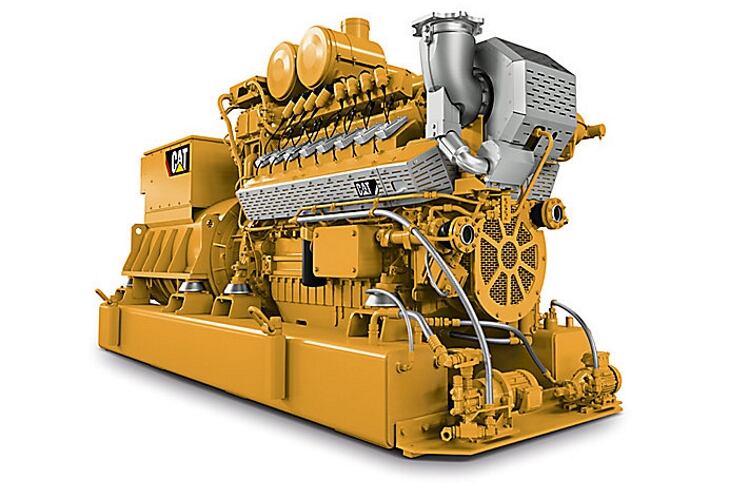With these systems responsible for a large share overall power demand, the dairy sector could take advantage of Combined Heat and Power (CHP) solutions.
Specifically, the sector could reap the benefits of trigeneration, says Nigel Thompson, sales manager – Gas Power Solutions at Finning UK & Ireland (Finning).
Combined heat and power (CHP) technology hinges on recovering heat lost during conventional processes and using it to generate electricity.
By producing heat and power concurrently instead of separately, Thompson says, CHP plants can reach efficiencies of more than 80%. This easily trumps coal and gas-fired plants, which struggle to exceed efficiencies over 40%.
“Such efficiency gains should be extremely attractive to dairy farmers, who often see their bottom line reduced by steep energy costs,” Thompson says.
The Association for Decentralised Energy, in Backing Industrial Productivity: The Combined Heat and Power Opportunity, estimates a properly-sized CHP system could reduce an industrial user’s primary fuel use by up to 30%.
Combined cooling
However, Thompson says, CHP technology has another benefit for dairy farmers – trigeneration, also known as combined cooling. This process involves fitting an adsorption chiller to a conventional cogeneration system to enable extremely efficient cooling, with the chiller capitalizing on the energy created by a cogeneration system to power cooling systems.
This is achieved by converting surplus exhaust heat from the cogeneration system into chilled water, which can then be used for cooling processes such as refrigeration.
Using process byproducts to enable refrigeration means dairy owners can avoid purchasing electrical cooling systems, which are energy-intensive and require large amounts of power to run, according to an International Dairy Federation bulletin.
Site owners can also avoid importing more expensive energy from the national grid and reduce their carbon emissions by up to 50%, Thompson said.
Trigeneration systems offer other practical benefits beyond allowing a level of independence from the national grid.
For example, the energy produced can help augment the site’s back-up power system should a blackout occur, and be used in rare situations where the site is required to run beyond regular capacity, Thompson added.
“By providing this added resilience and contributing toward overall cooling demand, a trigeneration system can lessen the burden on, and lifespan of, electrical systems already installed on-site.”
Return on investment
Thompson added, “Installing trigeneration systems capable of producing heat, power and refrigeration on-site is undoubtedly vital for dairies, who have a significant need for all three. Because it also allows site owners and operator to avoid reliance upon conventional boiler and cooling systems and importing power from the national grid, the value of these systems only increases.”
The precise savings trigeneration systems can realize varies depending on individual site circumstances, including products processed and operation size. For example, around 66% of the energy needed to produce butter is consumed by cooling systems. For both cheese and fluid milk this figure is around 20%.
Yet despite this, the savings that can be realised are still substantial. So though larger dairies with greater energy demands will see a quicker return on their investment, most stakeholders can expect a profit on a new, conventional CHP system within three years of installation, according to a Local Government Association publication.
“If we take account of the further savings generated by combined cooling, the payback period shrinks again” Thompson said.
He uses the example of a Caterpillar CG132B-16 / 800KWe generator supplied by Finning Power Systems, which can cost approximately £590,000 ($762,000). Combined with auxiliary equipment, installation, container and other additional costs, and depending on the complexity of the installation, the total cost may be as high as £1.3m ($1.7m).
If this generator were to run for 8,000 hours annually, the electricity and heating costs realised through trigeneration can nullify its initial purchasing costs within a year, Thompson said.
If the costs of gas required to keep the generator functioning are also factored in, dairy owners can expect to see a profit on their trigeneration unit within two years.
Finning has produced a dedicated guide, ‘Combined Heat and Power for Food and Drink Processing – Cutting Costs for Dairies’, which can be downloaded free at www.finning.com/chp/dairy.

